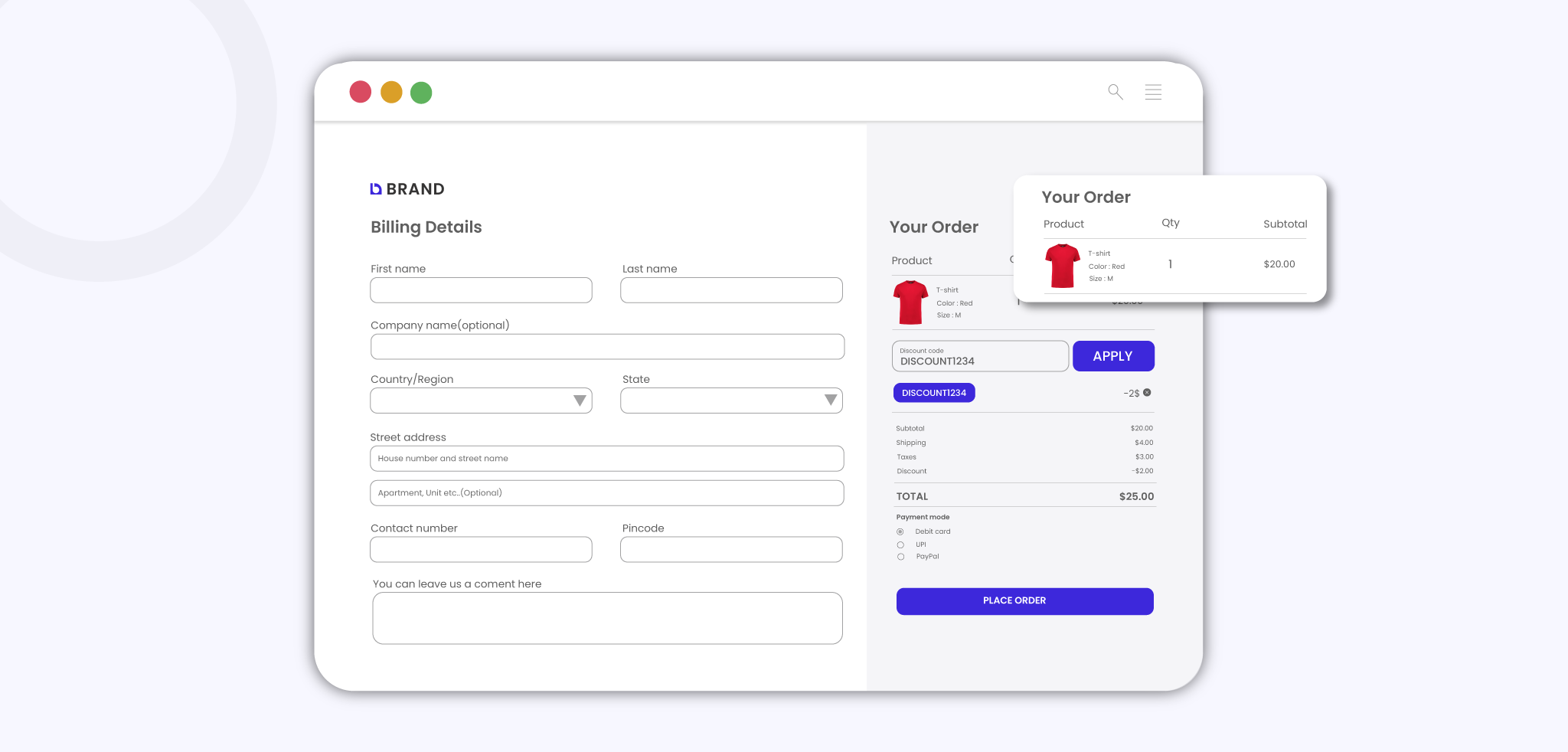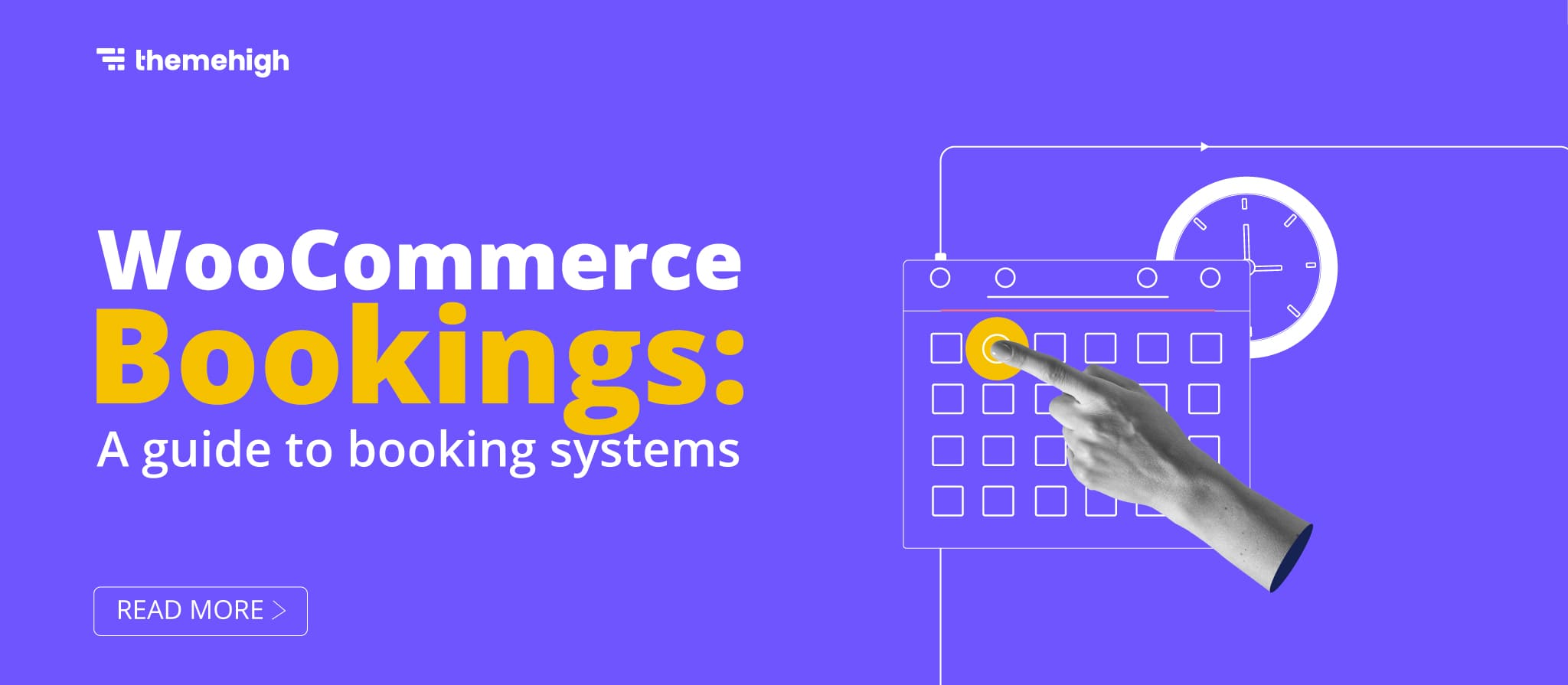Speed and convenience are the predominating factors in the online world. We live in a time when online shopping is drifting into a mobile experience. Here, keeping up with the need of the evolving consumers – maintaining simplicity and speed are indispensable. Having complex UI and a lengthy checkout process will make customers vexed. It can even result in customers abandoning the site and losing sales for this reason. There are many different tips and tricks to make your customers stay until they complete the actions. The checkout page can be planned and displayed as single page or multi-step type or get it styled whichever way want it to be. For all these different checkout styles, you have different WooCommerce plugins to install on your site. Apart from plugins, you can also custom code the checkout process. But one must keep in mind not to alter the native functionalities, like adding payment details and form fields on the checkout page, which will confuse the customer and lose their trust in the transaction.
So, you can have any type of checkout for your site. But deciding on which type of checkout is ideal – single page checkout or multi-step checkout for a WooCommerce site is an ongoing discussion. Here we’ll let you know the plusses and minuses of having a single-page checkout process or multi-step checkout for your WooCommerce site. Also, we will suggest in this article which one works the best.
Single page Checkout for WooCommerce
The default WooCommerce checkout is a single-page process. They have all the sections listed one after the other. They display everything on one page – the order review section, billing address section, shipping option and shipping address, and choosing payment methods.
You can still install a plugin for the one-page checkout. With the help of a plugin, you can manage the checkout page – edit, modify or customise them as required. Typically, one-page checkout is meant to display the entire checkout details in one place, by just scrolling down. It requires fewer clicks and fewer pages.

Pros of One-page Checkout
- Intuitive style: When a customer sees the entire checkout process on a single page, they get to learn what is required to be filled in and what they are heading towards. They feel easy to navigate, follow the fields in the form and complete the process without a hitch. With a single-page checkout, the process gets done smooth and seamless.
- Reduced Time: As mentioned earlier, speed is vital, and this applies to the checkout processes as well. With a multi-step checkout process, the time taken approximately is 1:30-1:40mins. Whereas one-page checkout may just take 50 seconds to 1 minute; which means it saves a lot of time. Thus the chances of anyone abandoning the site halfway through the checkout process are reduced significantly. So, the fewer the pages, the faster the checkout, and therefore greater the sales and conversion.
- Fewer steps & fewer clicks: One-page checkout needs few clicks as it involves fewer steps so it helps save time. The customers find everything they need on a single page, they need not go hitting on the ‘Next’ or ‘Proceed’ button to finish through the steps. All they may have to use is just tap on the ‘Tab’ key to move to the next field and simply checkout..!
- Quicker action leads to higher conversion: So we learn that a one-page checkout process lets customers checkout quickly increasing the speed significantly. This boosts the conversion rate as well. In an A/B split testing conducted by Elasticpath, there was a great difference in the conversion rate when comparing single-page checkout to a multi-page checkout. An increase of 21.8% in conversion rate was visible for sites with a one-page checkout.
- Minimal Cart Abandoning: High conversion also implies lesser cases of cart abandonment. When a customer can fill in everything from one page in fewer clicks, customers are less likely to leave the checkout without completing their purchase. The bounce rate in a single-page checkout is less.
Cons of One-page Checkout
- Lengthy forms can become overwhelming: Though a single-page checkout is meant to simplify the checkout process, they may become contradictory to the purpose – by being misguiding and unhelpful. If the process brings in long forms, they may tend to become deluding. Squeezing all information into one single page would not be welcomed by customers. And also, cannot go without mentioning, having to scroll down lengthy checkout forms will make your customers go confused and exhausted.
- Slow loading speed: The loading speed of the page will relatively increase if large content is to be displayed. A slow-loading checkout page could be an adequate reason for customers to leave the site, as they are always looking for speed and convenience.
- No analytical details available: Another biggest challenge of a single-page checkout is that Google is unable to share analytics about the customer if they have abandoned the process. It is hard to identify the point at which the customer has exited.
One click-checkout
As the name suggests, the checkout process gets completed in just one click. A one-click checkout can be used in situations where the customers have previously entered their details including payment options and saved them in their account. All that would be required then, is just go to the checkout click once to complete the process and get it purchased. This method mainly aims to significantly reduce the checkout time customers take so that it leverages convenience to increase revenue. Amazon had been the innovator of this and of long until September 2017 they had the patent of one-click checkout.
- Pros of One-click Checkout: these are ideal for the hasty, impatient shoppers. They are the fastest method for checkout available. With a one-click checkout, customers are required to previously input their information. Therefore this helps e-commerce owners to have higher conversion as they can sell more products and sell them faster too.
- Cons of One-click Checkout: While it may just take a click to finish the checkout process, the order review step is compromised in this method. Many customers appreciate being able to fully review for the final time before placing the order. But they are not provided with the standard review step that they want.
Another disadvantage of this method is that not all register and save their contact and payment details in their account of an online store. These cannot be in use if the customer login as a guest.
Multi-step Checkout for WooCommerce
As we all know the default WooCommerce checkout is a single-page process. To have the checkout process split into steps, a plugin has to be installed on your WooCommerce site. This will help you to organise the checkout process breaking it down into smaller and simpler steps like billing & shipping details, order review, and payment section. Here the customers are expected to fill in the details manually and after completing each step, move on to the next.
In research made on consumer behaviour, it was found that customers buying expensive products online prefer the multi-step checkout process over the conventional one-page checkout process. The customer can carefully review, confirm all details and carefully think through the steps when they are split-into steps. The entire process breaks down into 3-5 logical steps with separate screens for each. After initialising the checkout, the customer goes through new screens for each step.

Pros of Multi-step Checkout
- Simple and organised layout: When you enable the WooCommerce Multi-step Checkout plugin, the checkout process gets split into multiple pages. As each screen is a step by itself, it only has details that a particular step requires, thus avoiding clutter and confusion in the checkout process. With a clean design, the customer finds it easier to fill and move forward, though there are arguments – one long page is better than multiple shorter pages; customers find it easier and less intimidating to complete smaller steps one by one. Moreover, the progress bar displays how far the customers have moved in their checkout and it allows customers to review their order before swiping their credit cards.
- Collecting emails: While splitting the checkout into multiple steps, important data like email addresses gets collected in the initial steps. Even if the customer chooses to abandon the cart and leave the site without completing the purchase, the merchant can still keep in contact with them and send follow-up emails.
- Guest Login: Creating a customer account is not welcomed or convenient for all customers. The option of adding a guest checkout option can be incorporated into multi-step checkouts by the merchants if they want.
- Get Google analytical data: When you have the multi-step checkout for your WooCommerce store, you get to leverage the power of Google Analytics and analyze when most of the customers tend to exit from the checkout process. Once you learn the weak point, you can also optimize it accordingly.
Cons of Multi-step Checkout
- Time: This method is a lot more time-consuming. To check out and complete transactions, one has to navigate and accomplish several steps and procedures. This can be exhausting for the customers, especially for those who prefer speedy checkout. Also, there are greater chances of cart abandonment – the more time spent at the checkout, the greater the risk.
- The long procedure makes it less user-friendly: Evaluating Multi-step checkout from a UX point-of-view, it cannot be described as the ideal one.If the customer wishes to edit information entered first, they will have to surf through the pages and go to and fro.
Checkout with many steps may become overwhelming for the customers. Ideally, the checkout process must not exceed 3-4 steps. Also, it is best to display the steps completed with the progress bar to show customers how many steps are left before completing the purchase.
Which checkout is Ideal for your WooCommerce store?
Deciding between the two can be challenging. Both are in use – one-page and multi-page checkouts, by many top brands, despite all the pros and cons. When it comes to implementing one in your store, you need to carefully consider all the factors. There is no one size fit for all solutions while deciding on the checkout process. To determine which checkout type to implement in your online store, consider conducting an A/B test.
On a general observation, digital products can make use of single-page checkout where long forms with many details are not required. While getting fragile/expensive products shipped that require caution notes with clear instructions and proper addresses, it is always better to let customers take time and slowly fill in the steps at checkout.
Which one of the two do you prefer for your store? Please let us know your preferences by commenting below.
Be it a single page, or multiple-page checkout, you can use any for your WooCommerce store and also customise it using Themehigh’s plugins – WooCommerce Checkout Field Editor – which help you edit and modify a one-page checkout. Or instal Multi-Step Checkout for WooCommerce to split the default checkout page into multiple steps/pages.










 THANK YOU!
THANK YOU!